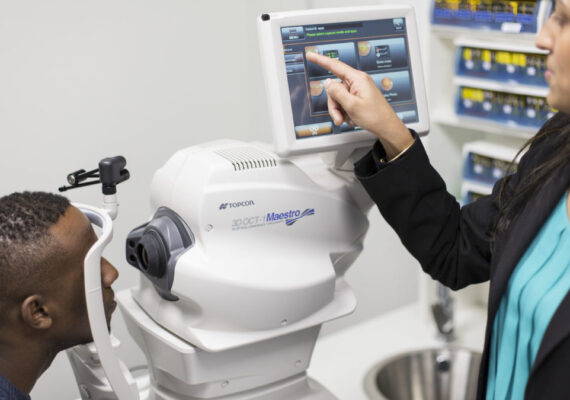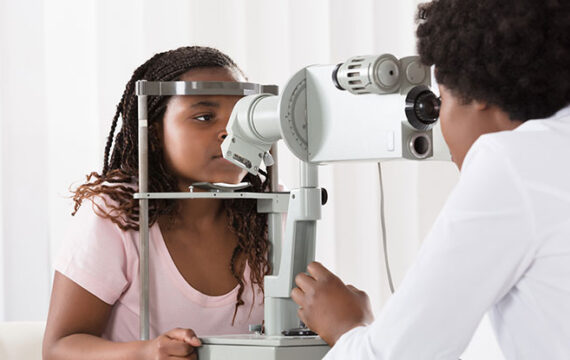Ophthalmic | General Eye Consultation
According to the International Agency for preventing Blindness, there are 1.1 billion people around the world living with the consequences of sight loss because they do not have access to eye care services. These are some of the poorest and most marginalized in society. Without change, this will rise to 1.8 billion people by 2050.
IAPB has therefore set out a strategy to tackle this challenge and has termed it ‘2030 in sight’.
This strategy builds on so much great work already done, but recognizes there is still much more to do.
Read more at IAPB.
Plan for and get a regular comprehensive eye examination.
A comprehensive eye examination will ensure that your eyecare practitioner obtains a detailed medical history and family history to understand your risk factors, followed by checking your vision, eye power, and eye health by instilling dilating eye drops.
As part of our efforts at ICEID to ensure we work together with the IAPB to achieve the following goals;
- No-one experiences unnecessary or preventable sight loss and everyone can achieve their full potential.
- Eye care and rehabilitation services are accessible, inclusive and affordable to everyone, everywhere, whenever they are needed.
- People understand the importance of caring for their own eye health and demand access to services, free from the weight of any social stigma.
We offer comprehensive ophthalmic consultation.
Getting an eye exam is an important part of staying healthy. But do you know when you and your family members should get eye exams? Do you know what a complete eye exam should cover?
Get the right exam at the right time and ensure your vision lasts a lifetime.


When Should You Have an Eye Exam?
Childhood vision screening
From birth through the teenage years, children’s eyes are growing and changing quickly. According to the American Academy of Ophthalmology and the American Association for Pediatric Ophthalmology and Strabismus, specific childhood eye screening guidelines have to be followed.
These screenings help identify when your child might need a complete eye exam.
Baseline eye exams for adults
If your eyes are healthy and vision is good, you should have a complete exam by your qualified eye health care professional once in your 20s and twice in your 30s.
There are some exceptions:
If you have an infection, injury, or eye pain, or you notice sudden floaters and flashes or patterns of light, call your eye doctor.
If you wear contact lenses, see your eye doctor every year.
If you have diabetes or have a family history of eye disease, talk with us to discuss how often your eyes should be examined.
It is recommended that adults get a complete eye examination at age 40. This is when early signs of disease or changes in vision may appear. It is important to find eye diseases early. Early treatment can help preserve your vision.
Not everyone should wait until age 40 for an eye exam
Some adults shouldn’t wait until they are 40 to have a complete eye exam. See your eye doctor now if you have an eye disease or risk factors such as:
After an exam, your eye doctor can tell you how often you should have your eyes checked in the future. It’s important to follow the schedule your eye doctor gives you, especially as you age. Your risk for eye disease increases as you get older.

Seniors and eye exams
If you are 65 or older, make sure you have your eyes checked every year or two. Your eye doctor will check for signs of age-related eye diseases such as:
Remember, always follow the schedule your eye doctor recommends for future eye exams.

Baseline eye exams for adults
If your eyes are healthy and vision is good, you should have a complete exam by your qualified eye health care professional once in your 20s and twice in your 30s.
Your pupils
Your doctor may check how your pupils respond to light by shining a bright beam of light into your eye. Pupils usually respond by getting smaller. If your pupils widen or don’t respond, this may reveal an underlying problem.
Your side vision
Loss of side vision (peripheral vision) may be a symptom of glaucoma. This test can find eye problems you aren’t aware of because you can lose side vision without noticing.
Your eye movement
A test called ocular motility evaluates the movement of your eyes. Your doctor looks to see if your eyes are aligned. They also check that your eye muscles are working properly.

Your eye pressure
Eye pressure testing, called tonometry, measures the pressure within your eye (intraocular eye pressure, or IOP). Elevated IOP is one sign of glaucoma. The test may involve a quick puff of air onto the eye or gently applying a pressure-sensitive tip near or against your eye. Your eye doctor may use numbing eye drops for this test for your comfort.
The front part of your eye
Your eye doctor uses a slit-lamp microscope to light up the front part of the eye. This includes the eyelids, cornea, iris and lens. This test checks for cataracts or any scars or scratches on your cornea.
Your retina and optic nerve
Your eye doctor will put dilating eye drops in your eye to dilate, or widen, your pupil. This will allow them to examine your retina and optic nerve for signs of damage from disease. Your eyes might be sensitive to light for a few hours after dilation.
Your medical history
Your doctor will ask you about your vision and your general health. We will ask about:
After an exam, your eye doctor can tell you how often you should have your eyes checked in the future. It’s important to follow the schedule your eye doctor gives you, especially as you age. Your risk for eye disease increases as you get older.
Your visual acuity.
This is the part of an eye exam people are most familiar with. You will read an eye chart to determine how well you see at various distances. You cover one eye while the other is being tested. This exam will determine whether you have 20/20 vision or not.
Your prescription for corrective lenses
Your doctor will ask you to look at an eye chart through a device called a phoropter. The phoropter contains different lenses. It will help determine the best eyeglass or contact lens prescription for you.

Other Tests during an Eye Examination
Your eye doctor may suggest other tests to further examine your eye. This can include specialized imaging techniques such as:
These tests help your eye doctor detect problems in the back of the eye, on the eye’s surface or inside the eye to diagnose diseases early.
Each part of the comprehensive eye exam provides important information about the health of your eyes. Make sure that you get a complete eye exam as part of your care for your overall health.
Credits to David Turbert.

